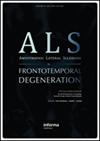Hearing the Houma
引用次数: 0
Abstract
This paper seeks to engage the construction of urban "soundscapes" as a potential flashpoint for class conflict by analyzing auditory and visual representations of "the neighborhood" (al-houma) in a handful of Moroccan hip-hop videos. I begin by situating Moroccan hip-hop within transnationally circulating associations of hip-hop with "urban" life, as well as the political dynamics of North Africa's colonial and postcolonial urban histories. I then analyze four videos comparatively, suggesting that each goes beyond lyrical and musical content of the songs to construct a sensory experience of the city—or neighborhood—for the listener-viewer. In giving attention to the political implications of each video, however, I argue that what distinguishes each is less what sort of "soundscape" emerges in his video but how each video teaches the audience to "hear" the Houma. While videos by mainstream rappers Muslim and Don Bigg figure urban space as threatening and in need of moral recuperation, they enact these pedagogies largely through indexical figurations of their respective soundscapes, that is, by directing the listener to attend to certain (inaudible) sounds and to interpret them in a certain way. By contrast, a video by El Haqed, known as a more staunchly oppositional figure, visually and sonically constructs a peri-urban lifeworld conditioned by neoliberal economic abandonment yet resistant to the postcolonial gaze. This contrast, I suggest, raises crucial questions about how hip-hop is linked to broader dynamics of cultural appropriation and "resistance" politics.听侯马
本文试图通过分析少数摩洛哥嘻哈视频中“邻里”(al-houma)的听觉和视觉表现,将城市“音景”的建设作为阶级冲突的潜在爆发点。我首先将摩洛哥嘻哈置于嘻哈与“城市”生活以及北非殖民和后殖民城市历史的政治动态之间的跨国流通联系中。然后我比较分析了四个视频,表明每一个都超越了歌曲的抒情和音乐内容,为听众和观众构建了一个城市或社区的感官体验。然而,在关注每个视频的政治含义时,我认为,每个视频的区别并不在于他的视频中出现了什么样的“音景”,而是每个视频如何教会观众“听到”Houma。虽然主流说唱歌手Muslim和Don Bigg的视频将城市空间描绘成具有威胁性的,需要道德上的恢复,但他们主要是通过各自音景的指数形图来制定这些教学方法,也就是说,通过引导听众注意某些(听不清)声音,并以某种方式解释它们。相比之下,El Haqed的一段视频,被称为一个更坚定的反对派人物,在视觉和声音上构建了一个受新自由主义经济抛弃影响的近郊城市生活世界,但却抵制后殖民主义的目光。我认为,这种对比提出了一个关键问题,即嘻哈是如何与文化挪用和“抵抗”政治的更广泛动态联系在一起的。
本文章由计算机程序翻译,如有差异,请以英文原文为准。
求助全文
约1分钟内获得全文
求助全文

 求助内容:
求助内容: 应助结果提醒方式:
应助结果提醒方式:


